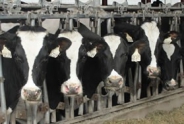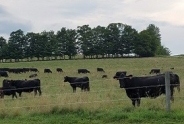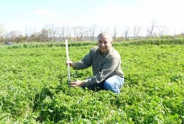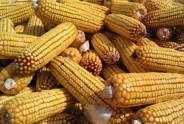Forage Sampling and Varying Results
David Balbian, Area Dairy Specialist
Central New York Dairy and Field Crops
This was a topic recently discussed by Dr. Bill Weiss, from The Ohio State University. Work they recently conducted showed that sampling error can vary widely between feeds and between farms. Work they did in Ohio, using a very strict set of protocols for the sampling process, showed more variation in results than most nutritionists (and producers) would like to see.
Variation in dry matter is something that can be tested on-farm with a Koster Moisture Tester, microwave, or other method. As fed weights (when feeding by weight with TMR feeding systems) can easily be adjusted to account for those changes. But, what do you do when the actual nutrient content changes? Do you have your nutritionist adjust your ration every week? That answer really depends on whether or not your forages did actually change or was the variation a result of sampling error?
Actual change is often easily recognized by producers because they know feed came from a different field or was a different variety. How the feed is stored can impact changes at feed out. Feed differences in upright silos and especially Ag. bags will be more apparent than with bunker silos, where differences between fields are often masked because the feed is blended or layered when filling occurred.
So, is this something you should be concerned with? When feed obviously changes it should be resampled. How about when the feed is all the same? Based on the work in Ohio it seems like a good practice to follow (to be sure your results are accurate) is to sample two times a week for two weeks and then average the results. A bit extreme? Maybe, but take a few samples of the same feed in a short period of time and see what you get.
Upcoming Events
2026 Dairy Day
January 13, 2026 : Dairy Day - Hamilton
Hamilton, NY
Lunch included
January 14, 2026 : Dairy Day - Ballston Spa
Ballston Spa, NY
Lunch included
2026 Corn & Soybean Day
January 20, 2026 : Corn & Soybean Day - Hamilton
Hamilton, NY
Lunch included. 2.75 DEC Credits available
January 21, 2026 : Corn & Soybean Day - Ballston Spa
Ballston Spa, NY
Lunch included. 2.75 DEC Credits available
Announcements
Statewide Field Crop Pathology Needs Assessment Survey
Your input is wanted for identifying priorities!Sign Up for Our Weekly E-Newsletter
We send out a bi-weekly e-newsletter that has announcements, upcoming programs, and opportunities for you! Registration is quick, easy, and free. Click here to sign up today!Farmers Can Join MeatSuite For Free!
MeatSuite.com is a free resource provided by Cornell University where NY meat farmers can create a farm profile and list their bulk (wholes, halves, quarters) and bundled (i.e. Grilling Bundle) meat products.Why should farmers join?
1. It's free and easy!
2. Connect with more local customers. In the past year the MeatSuite.com farm directory had 8,300 visits from New York consumers. Farm profiles get as many as 25 views per month from potential local customers. We also spotlight MeatSuite farms on social media and bring attention and purchases to farms through highlights and giveaways.
How do I join?
Farmers can visit https://www.meatsuite.com/farmers/ to create a free farm profile. You must list at least one product for your farm's profile to go live. You'll also have access to Cornell's free Meat Price Calculator, a helpful tool for pricing your meat to make a profit.
While you're on MeatSuite, check out the "Creating Consumer-Friendly Bulk Meats" publication on the log-in page. It has tips on how to create bulk meat products that are easier for first-time buyers to say "yes" to.
If you have any questions as you create your farm profile or products, we're here to help! Please email Matt LeRoux at mnl28@cornell.edu.




